{{tile.title}}
{{tile.description}}
{{tile.expiryDate}}









We will be right with you.
Savings Strategies
CIMB ❘ 19 Jul 2021
3 min(s) read
“Savings for a rainy day”, that’s exactly what your emergency fund can do for you. Building up an emergency fund can help you prepare for any unexpected emergencies without having to take on additional credit card debt or loan/ financing.
Learn how to save up for an emergency fund with our "Emergency Funds: saving for when you need it most" article.
But where should you stash your emergency fund? Should it be in a fixed deposit, an investment account or in a basic savings account? Well, let’s find out!
Tip #1 Easily Accessible
Your emergency savings should be kept in an account that’s readily available for you. This is to enable you to dip into the account whenever you need the fund.
Tip #2 Able To Grow Your Emergency Savings
Get an account that can help you grow your emergency savings even more. The return on your fund will be compounded, creating a snowball effect overtime that can help you cover at least six months of living expenses.
Want to know how compounding interest/compounding profit* can help grow your fund? Watch our #fitlite video here.
Tip #3 Low-Risk Account
Since this fund is meant to be for emergencies only, it should not be stored in a high-risk investment account.
Now that we've got the basics, here are some accounts that you can consider:
This might be a strange option to stash your cash, but one to consider if you own a Flexi home financing. For many fully Flexi home financing solutions, the financing account is tied to a current account – where customers can deposit and withdraw any extra cash easily and without restrictions.
What are the perks of stashing your emergency fund in this current account? While you won’t typically get a high interest/profit rate, you can use this account to reduce the interest/profit rate on your loan/financing. As the saying goes, it's akin to killing two birds with one stone.
Learn how a Flexi home financing works (and other tips) in our "7 questions you must ask before buying your first home" article.
This is a savings account that gives you the convenience to make withdrawals and transactions anytime you want. Ideally, your emergency fund should be in a separate account from your spending account.
You should also look for options with a competitive interest/profit rate and no fees. Comparison sites such RinggitPlus and iMoney are great online sources to help you compare savings accounts that are available in Malaysia – making it easier for you to make your choice!
Looking for a recommendation? If you’re a CIMB Preferred member, the new CIMB Preferred Savings Account-i is a good option to stash your emergency fund. With this account, you can earn up to 1.75% per annum on your account balance, which is also one of the most competitive rate in the market, earn monthly Bonus Points and enjoy exclusive Preferred Privileges. Head on to the CIMB Preferred Savings Account-i product page to know more.
At CIMB, we have a variety of products that can meet your savings needs too. Discover the best option for you right here.
Note: Savings Account/-i is protected by PIDM up to RM250,000 for each depositor.
A fixed deposit (FD) account is a type of bank account that promises you – the investor – a fixed interest/profit rate when you keep your money for an agree period of time. The drawback? Your money is "locked" for a set period of time (1 to 60 months) and withdrawals might cost you to lose your dividend.
But there are FDs that allow withdrawals, which can make them ideal stashing options for your emergency fund. One such example is CIMB's Unfixed Deposit. This account allows you to make withdrawals in multiples of RM1,000 while maintaining the agreed rate on your remaining balance. Furthermore, you’ll get to choose your maturity period between 1 to 60 months and its respective interest/profit rates.
Find the right Fixed Deposit Account for you by clicking here. If you're a CIMB customer with a current or a savings account, you can easily open an FD account via CIMB Clicks.
Note: Fixed Deposit/Fixed Return Income Account-i is protected by PIDM up to RM250,000 for each depositor.
Since emergency funds need to be liquid (i.e. can be taken out easily) and safe from the danger of losing your capital, storing them in an investment account might not be an ideal move. But if you do want to invest your money, consider investments that are low-risk and easy to withdraw/top-up, such as Amanah Saham Nasional Berhad or money market funds offered by banks and a robo-adviser. What to look out for:
1. Management fees
2. Capital protection
3. Withdrawal/top-up process
In CIMB, one low-risk investment option is the Term Investment Account-i (TIA-i). While this investment account is not protected by PIDM**, TIA-i's investment objective is to generate stable returns to investors while perserving the capital over an agreed period through low to moderate risk exposure. Investors are also entitled to 50% of the accrued profit (if any) for any withdrawals before maturity. For more information on TIA-i, head on to the product page here. Also find out about TIA-i's rate of return here.
It’s never too late for you to kick-start your emergency fund. While you consider diversifying your emergency fund with the options above, you can also seek help from our financial advisory. Let us help you find the ideal account for your emergency savings. Visit or call us today!
This article is for informational purposes only and CIMB does not make any representation and warranty as to the accuracy, completeness and fairness of any information contained in this article. As this article is general in nature, it is not intended to address the circumstances of any particular individual or entity. You are advised to consult a financial advisor or investment professional before making any decisions based on the information contained in this article. CIMB assumes no liability for any consequences arising from your reliance on the information presented here.
*Note:
**PIDM: Perbadanan Insurans Deposit Malaysia
This link is provided for your convenience only and shall not be considered or construed as an endorsement or verification of such linked website or its contents by CIMB Group.
CIMB Group makes no warranties as to the status of this link or information contained in the website you are about to access.
Do you wish to proceed?

